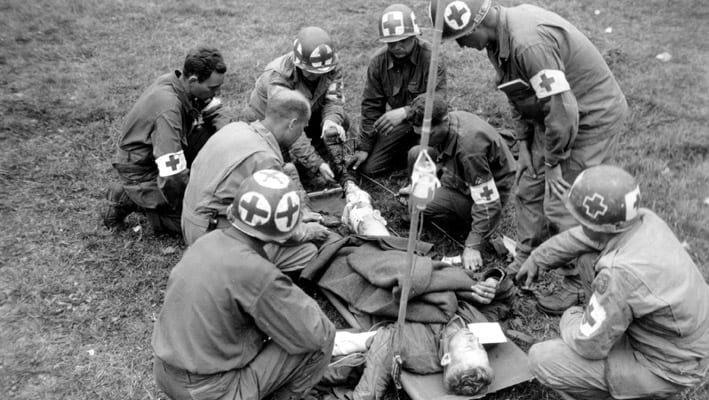The Arctic is a polar region north of the Arctic Circle – the most northern point of the earth’s five major circles of latitude. It’s made up of the Arctic Ocean and adjoining seas and parts of Alaska, northern Canada, Iceland, Finland, Russia, Greenland, Norway and Sweden.
Much of the land in the Arctic region has snow and ice cover all year round, although it varies in density depending on the season. The treeless permafrost is besieged with tundra, while the Arctic Ocean and surrounding seas contain ice.
It has a unique ecosystem and although it seems to be a harsh and inhospitable environment, the indigenous population and the wildlife have adapted to its extreme freezing conditions.
Flora and fauna
The region enjoys natural resources such as gas, oil and minerals and the sub-Arctic forest. Vegetation includes herbs, dwarf shrubs, lichens and mosses that all grow close to the ground to form tundra. Further northwards, where the climate is increasingly cold, vegetation decreases significantly.
It isn’t possible for trees to grow in the Arctic, although shrubs are common in the warmer parts and can reach heights of around 6ft tall. Much of the ground is bare in the coldest regions.
Surviving on roots, mosses and lichens, a number of hardy species of mammals live in the Arctic, including herbivores such as the lemming, the Arctic hare, caribou and musk-ox. The carnivorous animals and birds who prey on the herbivores include the snowy owl, grizzly bear, Arctic fox and wolf.
Indigenous people
The English term for the indigenous people of the Arctic is ‘Eskimo’. Traditionally, it refers to all the inhabitants of polar region, stretching from Greenland and Canada to Alaska and eastern Siberia in Russia.
There are two main groups of people inhabiting the Arctic – one comprises the Inuit populations of Canada and Greenland and the Alaskan Iñupiat people, and the second is the Yupik population of eastern Siberia and Alaska. The Yupik population is divided further into four different language groups.
A third indigenous group lives in the north of the region and is known as the Aleut. All of the groups are closely related in ancestry and share a common ancestor – the Eskimo-Aleut.
The term ‘Eskimo’ isn’t one which the local people use to describe themselves. The governments of Greenland and Canada have also stopped using the term in official documents.
Hunting
The earliest indigenous population in the Arctic dates from around 6,000 years ago. Archaeologists estimate they lived in south-west Alaska in villages normally numbering 50 to 150 people, although larger communities grew to 500 people.
They settled in different places, including the rocky islands, tundra areas, forests and close to stretches of water that didn’t freeze in winter. The majority of communities were in coastal areas.
Communities relied on meat to stay alive and whales provided a large source of food – e.g. a bowhead whale would provide many tons of food. Hunting and butchering a whale required many workers. Four to eight hunters would sail out in an open boat called an umiak when a whale was sighted, with a crew comprising a captain, a harpooner and paddlers.
The whale was initially harpooned and floats were attached to keep it on the surface. When tired, it was killed with a lance and dragged back to the shore. Most of the villagers would butcher the whale and divide the meat among the community. The meat was stored in holes in the frozen ground.
The Eskimos also hunted other mammals such as seals, walrus, polar bears and small whales, such as belugas – a large walrus could provide several hundred pounds of meat. Fish was a staple source of protein.
Lifestyle
Although living in igloos was more widespread in the past as the Inuit people adapted to Arctic’s harsh climate, this isn’t the case today. Igloos today are almost exclusively used as Inuit hunting camps near coastal areas.
Most indigenous people live in regular houses in the 21st century. However, the hunters still hunt for polar bears and other mammals using a dogsled team and the people are intent on keeping their traditional culture alive, although snowmobiles have become a modern transport means for many people.
Wooden homes have replaced igloos and residential estates are often made of prefabricated buildings manufactured in Canada and usually erected on stilts to combat the permafrost. Each building has a holding tank for oil used for heating, while tankers deliver fresh water.
The buildings usually have kitchens with an electric cooking range and a bathroom with a shower, bath and flushing toilet, just like any other home.
Many of the Inuit people today make a living through being self-employed artists, stone carvers, jewellers and painters. Others have regular salaried jobs to pay the bills for their electricity or internet access.
Food
Although some Inuit still hunt and fish, many people buy their food from a general store within the community, including fresh and frozen foods, dried goods, processed food and other items shipped from southern Canada. Fresh fruit and vegetables, which can’t be grown in the Arctic climate, bread and milk are brought in by aircraft.
Modern food is becoming increasingly popular among the younger people, although the older generation believes traditional food obtained through hunting and fishing is cheaper and healthier.
Although the Arctic has a frozen climate, the days of storing perishable foods in a hole in the ground have largely gone and most shops have a cold store, while nearly every home today has a fridge-freezer in the kitchen.
Although we live in totally different climates, it’s surprising to learn that our food storage methods are quite similar!
1COLD specialises in the design, project management and construction of temperature-controlled, hygienic environments including cold rooms, industrial chillers and cold stores for the food and drinks industry. Please contact us for more information.




